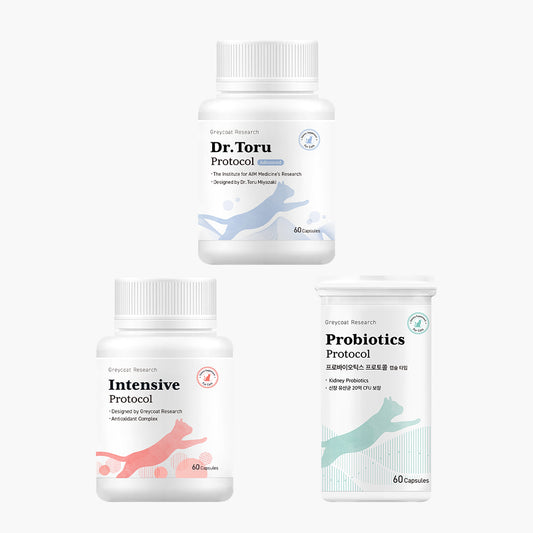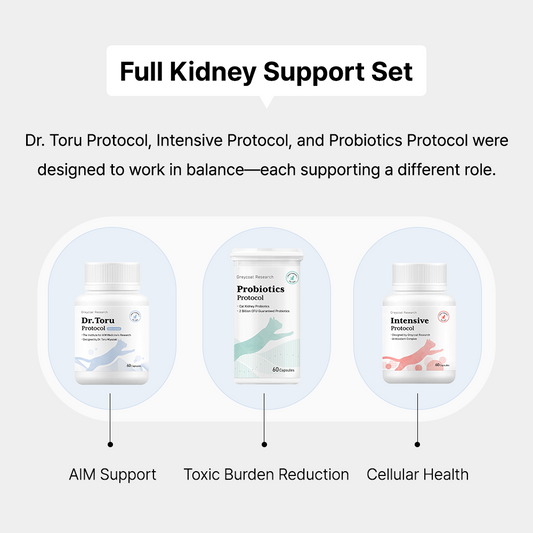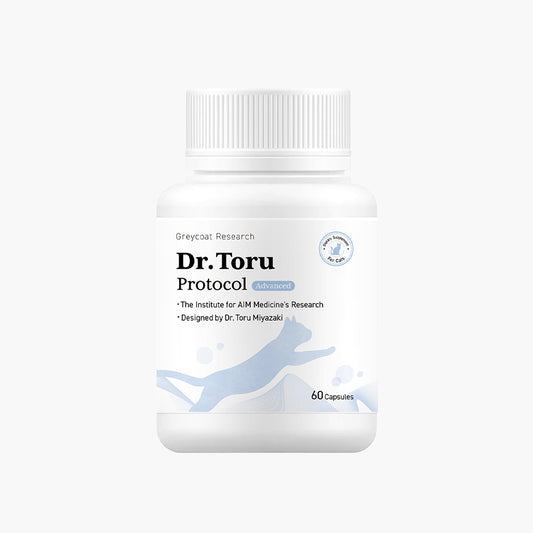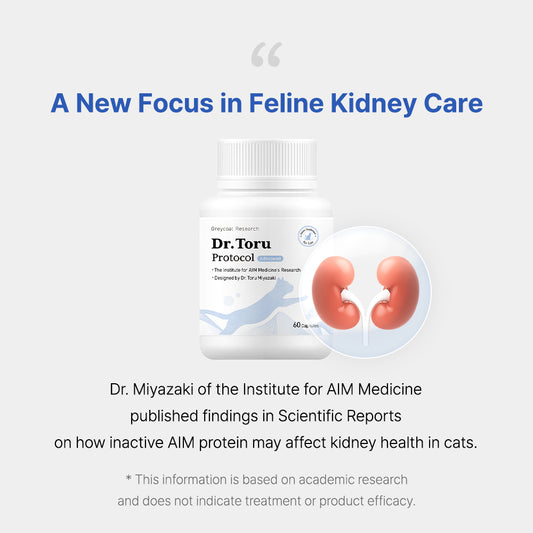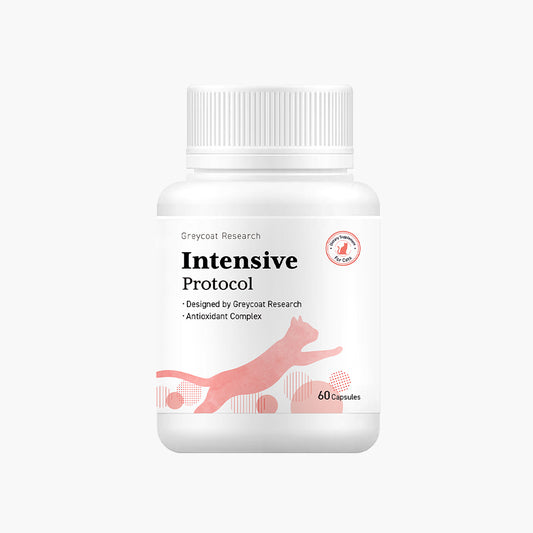Stage 2 Kidney Care Program
This stage should never be overlooked — it’s time to take it seriously.
Your cat may still look healthy, but early kidney decline may have already begun.
Now is the time to start structured care.
At a Glance
This guide provides supplement, diet, and hydration tips for Stage 2 kidney care.
1. Supplements
At this stage, nutritional support becomes very important.
✔ For cats with stable appetite and energy
- Dr. Toru Protocol – AIM-based Support
Supports the body’s natural waste-clearing system and immune balance. - Probiotics Protocol – Toxin Burden Support
Supports gut flora and helps manage toxin load through the gut–kidney axis.
✔ For cats showing reduced appetite or lower energy
In addition to the above supplements, consider adding:
- Intensive Protocol – Cellular Energy Support
Helps maintain cellular energy and defense against oxidative stress. - Omega-3 (EPA + DHA 100 mg) – Circulatory Support
Helps maintain circulatory wellness and organ balance.
-
Complete Care Routine
Full Kidney Support Set
Regular price From US$144.52Regular priceUnit price perUS$160.58Sale price From US$144.52Sale -
Kidney Support
Dr. Toru Protocol
Regular price From US$46.60Regular priceUnit price per -
Intensive Cellular Support
Intensive Protocol
2 Month Supply
Regular price From US$54.99Regular priceUnit price per -
Kidney Burden Relief
Probiotics Protocol
2 Month Supply
Regular price From US$54.99Regular priceUnit price per
2. Diet & Hydration
From Stage 2 onward, it becomes important to manage diet and hydration more carefully.
✔ Diet Tips
- Begin transitioning to a renal-friendly or prescription diet.
- Choose formulas with controlled protein, phosphorus, and sodium levels.
- If your cat refuses a renal diet, mix it gradually with the current food to increase acceptance.
✔ Hydration Tips
- Add about 30 ml (≈ 1 fl oz) of water to wet food or liquid treats two to three times per day.
- Under veterinary guidance, early use of subcutaneous fluids can also be considered.
3. Routine Checkpoints
At this stage, regular checkups become increasingly important.
✔ Every 3–6 Months
- Schedule wellness exams with blood tests (Creatinine and BUN).
- Include an abdominal X-ray under veterinary guidance.
✔ Every Week
- Weigh your cat under the same conditions for accuracy.
- Track appetite and activity — sudden changes may indicate imbalance.
- Watch water intake — a sharp increase may indicate imbalance.
4. Emergency Signs
Seek veterinary attention if you notice:
- Complete loss of appetite or frequent vomiting
- Noticeable lethargy or labored breathing
- Rapid weight loss or sudden dehydration
Reference
According to the IRIS Guidelines, Stage 2 represents a moderate decline in kidney function.
At this stage, kidney function is about 33–66% of normal.
Creatinine levels typically range from 1.6 to 2.8 mg/dL, and BUN is usually between 16 and 35 mg/dL.
Values may vary depending on individual health status and laboratory standards.
Disclaimer
This content is provided for educational reference only and is not intended to replace veterinary diagnosis or treatment.
Always consult your veterinarian for professional guidance, and use Greycoat products as part of a supervised care routine.
Complete Your Cat Care Routine
Stories From Cat Guardians
Our mission is to advance feline kidney health
— Greycoat Research



